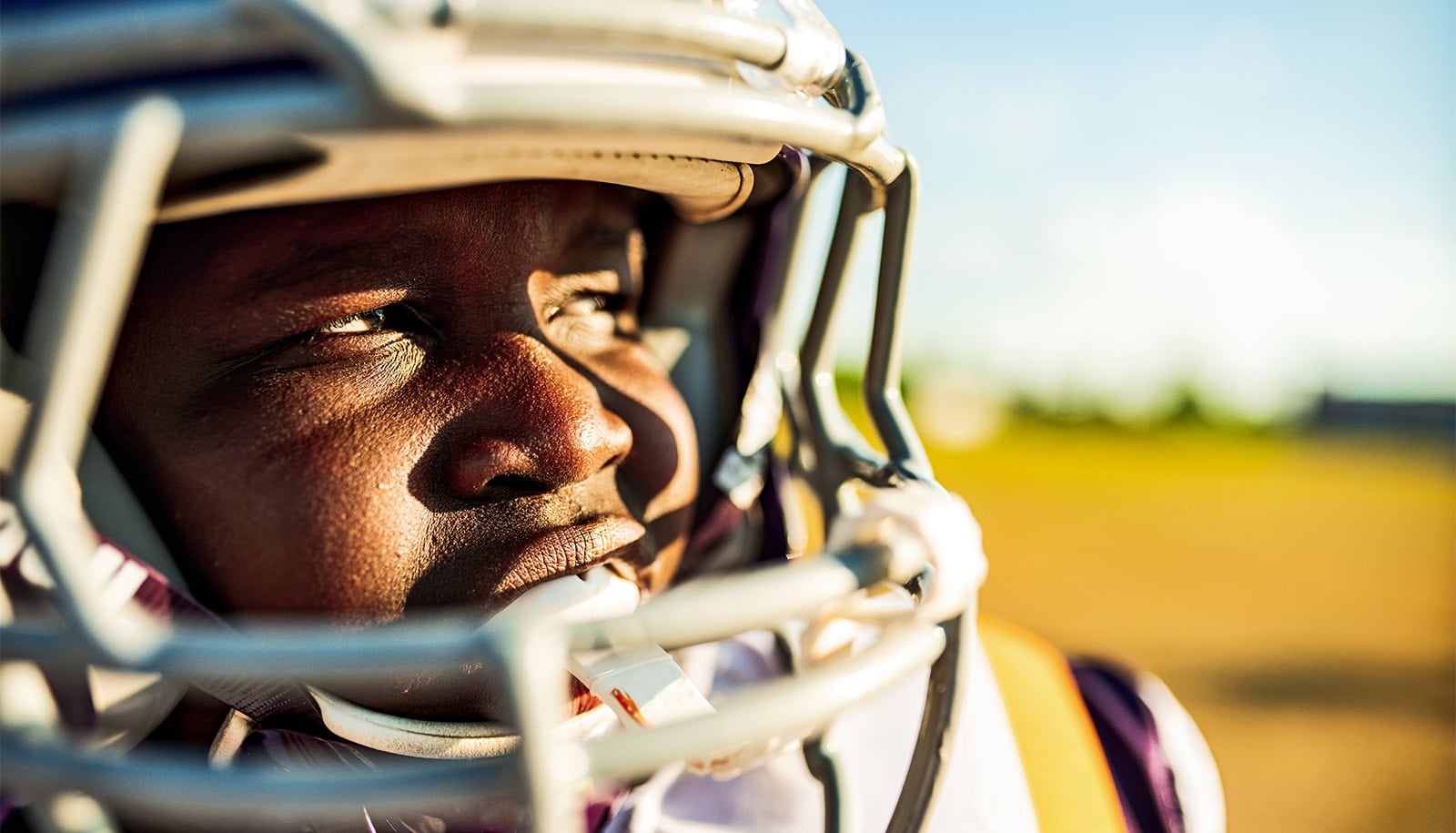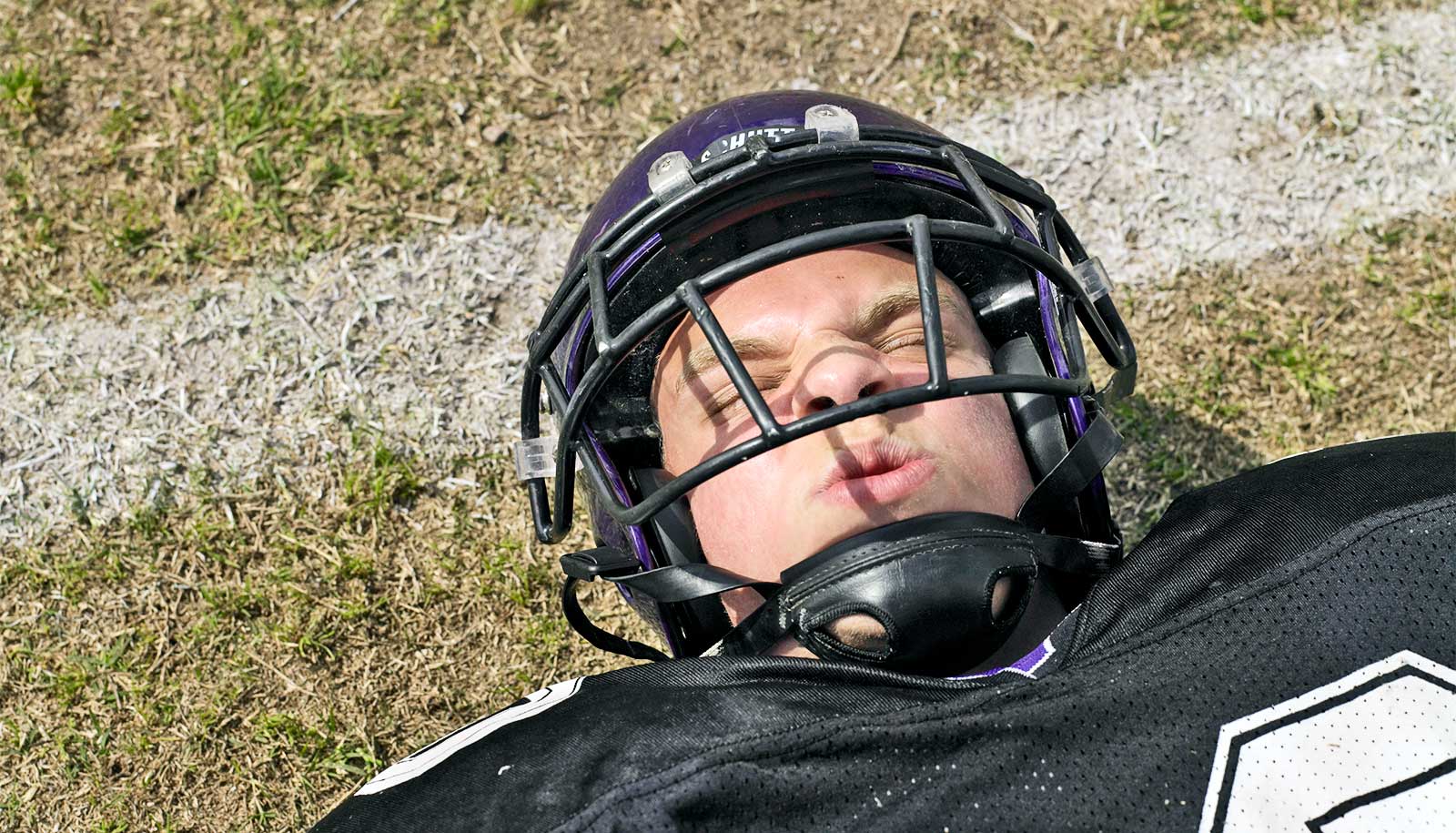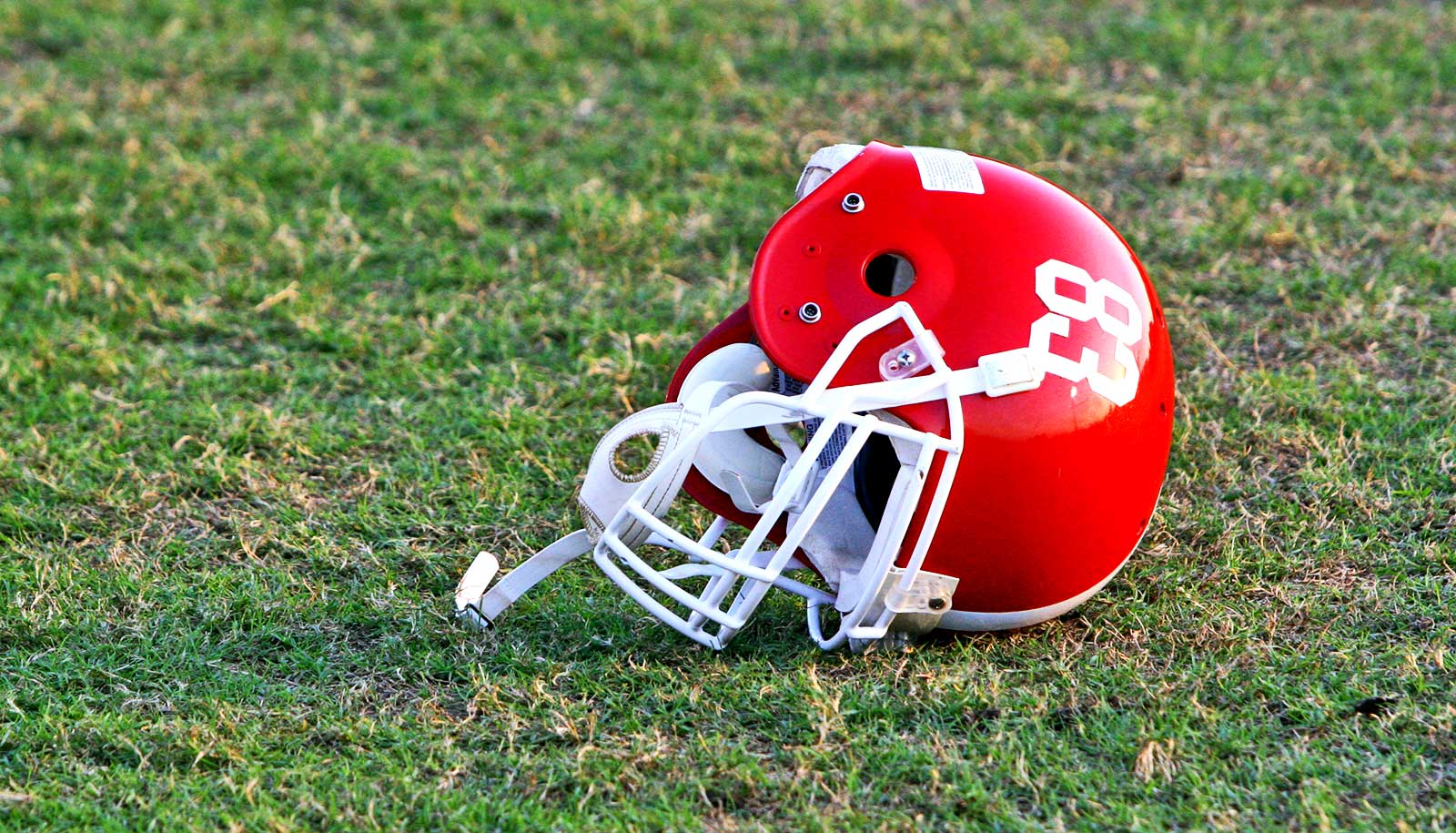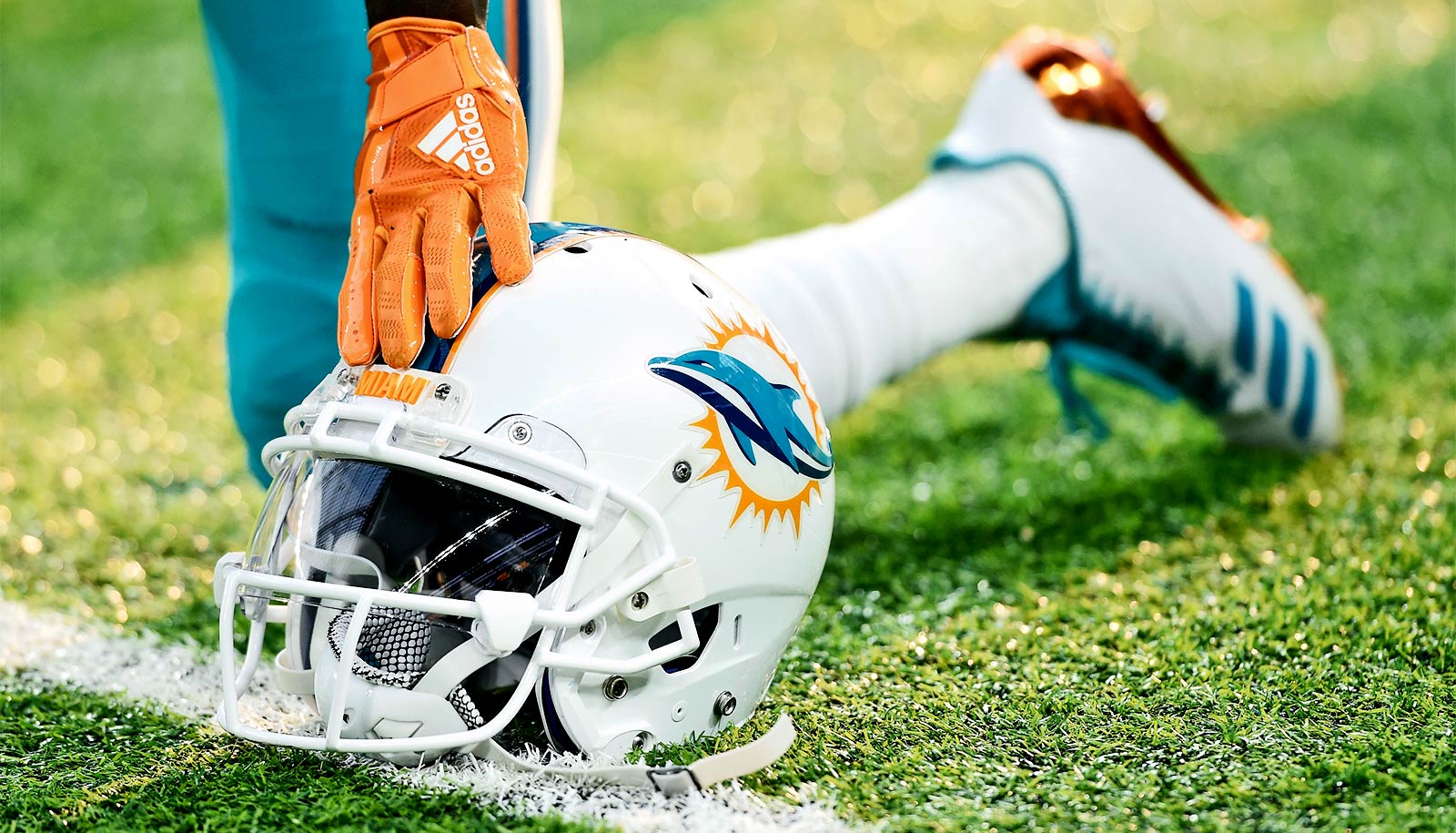In a new study, more than 40% of football, soccer, ice hockey, and other contact sport athletes under the age of 30 had signs of CTE, a degenerative brain disease.
It’s perhaps not especially surprising that after enduring decades of head-thumping collisions on the football field, many NFL veterans spend their retirements grappling with declining brain health. Almost all—92%—of ex-NFL players studied have been diagnosed with chronic traumatic encephalopathy (CTE).
The new findings, suggest it’s not just grizzled old pro athletes who should be concerned about the degenerative brain disease. Researchers found that young, amateur athletes who play some of the most physical contact sports also seem to be at risk, despite their comparatively short, lower profile playing careers.
“We’re seeing the beginnings of this disease in young people who were primarily playing amateur sports.”
After examining the brains of 152 contact sport participants who had died under age 30, the researchers discovered 41.4% had signs of CTE. More than 70% of those diagnosed were amateur athletes who’d played sports like football, ice hockey, soccer, rugby, and wrestling.
The study, published in JAMA Neurology, included the first American female athlete diagnosed with CTE, a 28-year-old collegiate soccer player whose identity remains private.
“It seems to be well accepted now that you can play at a very high level of elite American football or ice hockey and get CTE,” says Ann McKee, director of the Boston University CTE Center. “But we’re seeing the beginnings of this disease in young people who were primarily playing amateur sports.”
For parents, the latest findings present a dilemma. Sports—whether high contact like ice hockey or largely collision-free like basketball—are important for kids and young people, keeping them moving and socializing and teaching them a range of life skills. But if the price of playing certain sports is an increased risk of permanent and devastating damage to developing brains, is it worth it?
Apathy, depression, and behavior control
The researchers began by scrutinizing brain samples for signs of an abnormal buildup of a protein called tau—a signature of CTE—as well as for damage to the white matter and other brain tissue. They pulled all of the samples from the BU-led UNITE Brain Bank, a repository of more than 1,400 brains donated after death for study, which is run in partnership with the US Department of Veterans Affairs and the Concussion Legacy Foundation.
The number of CTE cases found in young contact sport players compared to the general public is startling, Ann McKee says.
That neuropathologic examination showed that a majority of the athletes with CTE had a mild, early stage of the disease, but a small number—three—had reached the third of its four stages. (Another recent BU CTE Center study also revealed that playing tackle football at a young age was tied to brain decline in later life.) At the moment, CTE can only be diagnosed after death.
The researchers, who conducted detailed interviews with the donors’ relatives, also determined most of the athletes were suffering from clinical symptoms during their short lives, even if they didn’t have CTE. More than 70% of them had apathy and a similar number were depressed, while more than half had difficulty controlling their behavior; many also had issues with substance use.
“Those symptoms might be a result of the head injury itself,” says McKee, professor at the Chobanian & Avedisian School of Medicine, and a chief of neuropathology at the VA Boston Healthcare System. “The study suggests that some of the symptoms these young athletes are experiencing are not caused by the early tau pathology of CTE. The head impacts themselves might cause damage to the white matter and vascular injury, a breach of the blood-brain barrier.”
She and her team concluded that even just a couple more years on the field made a big difference. Those diagnosed with CTE played, on average, for an additional 3.8 years than those without it.
The study didn’t include samples from young people who played noncontact sports—the UNITE Brain Bank mainly takes donations from those who’d been concerned about their brain health during life. The number of CTE cases found in young contact sport players compared to the general public is startling, McKee says.
“This study clearly shows that the pathology of CTE starts early,” says McKee. “The fact that over 40% of young contact and collision sport athletes in the UNITE Brain Bank have CTE is remarkable—considering that studies of community brain banks show that fewer than 1% of the general population has CTE.”
What can parents do?
McKee recognizes the challenges the new findings will present to parents.
“The brain is obviously so critical to a child’s productivity and their potential in life,” says McKee. “We want our kids to be physically fit, to get the benefits from playing team sports—that’s important for a child’s development. But we don’t want to sacrifice the brain, and I do think the importance of maintaining brain health is gaining traction worldwide.”
She’s a coauthor of the “CTE Prevention Protocol,” a joint project between the BU CTE Center and the Concussion Legacy Foundation. It’s a guide to reducing hits to the head—and the force of those blows—in a range of sports.
Suggestions include cutting back on drills that involve hits and teaching defensive techniques that help lower the power of tackles and collisions. The protocol also suggests rule changes, like banning fighting in ice hockey, headers after goal kicks in soccer, and home plate collisions in baseball.
And, with youth players in mind, another idea is taking head impacts out of the game entirely until a certain age: no headers in soccer, no body checking in ice hockey, no tackling in football. McKee suspects many younger players are open to some of those changes, including at the professional level, even if some fans entrenched with a lifetime of memories aren’t.
“People are very attached to these games,” says McKee. “But they are all just products of our imagination and our wanting to be entertained. The rules aren’t sacred. If we put our heads together, no pun intended, we can come up with an extremely exciting, entertaining game—which is what everybody wants—that doesn’t injure the players in a way they can never recover from.”
Changes to rules for contact sport athletes
Some of the report’s recommended changes are already happening. A New York football league has removed kickoffs from high school games; the United Kingdom has ditched headers for younger soccer players. But McKee says her team’s latest study—which highlighted a pattern of depression and behavior issues—shows youth athletes also need broader support when it comes to their physical and mental health.
For coaches, that means better tracking of how their players are doing, whether that involves monitoring their symptoms or using technology like accelerometers, which measure velocity, in helmets to get data on how many knocks players are taking. “These suggestions are going to be unpopular,” says McKee, “because no one wants to have a medical problem that precludes them from playing, so it’s going to have to be mandated, I think.” But, she says, the only known way to prevent CTE, or at least lower the risk of getting the disease, is to reduce or eliminate repetitive hits to the head.
For everyone involved in the lives of young athletes, she says, it’s also important to recognize when they need more help than a loved one or coach can offer.
“A lot of people with these symptoms feel desperate and they aren’t taken seriously,” she says. “They feel they need help, but aren’t able to get it for many reasons. A lot of the time, medical care providers just aren’t knowledgeable enough about what might be happening in the brain of a person who’s had a lot of head impacts.
“If a person is experiencing symptoms, they need to seek help, because it’s highly probable that a lot of these symptoms can be managed.”
The US Department of Veterans Affairs, the National Institutes of Health, the National Institute of Neurological Disorders and Stroke, National Institute on Aging, Buoniconti Foundation, and the Mac Parkman Foundation funded the work.
Gina DiGravio contributed reporting to this article.
Source: Boston University



